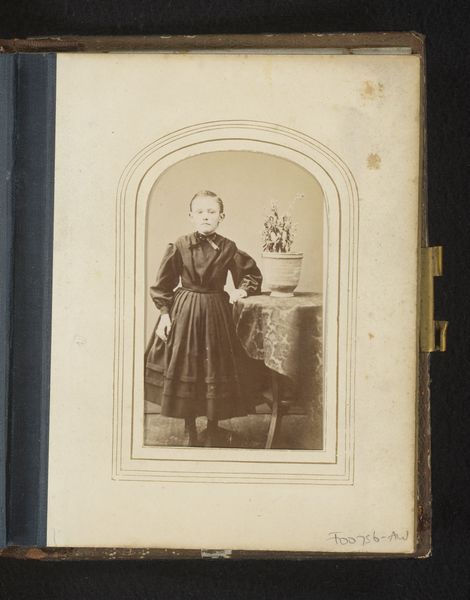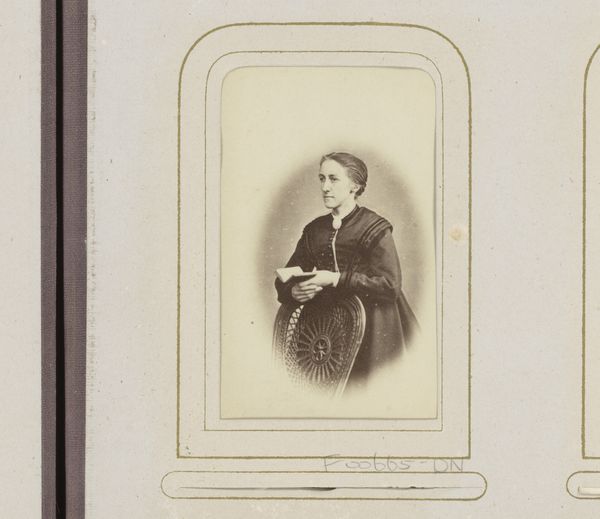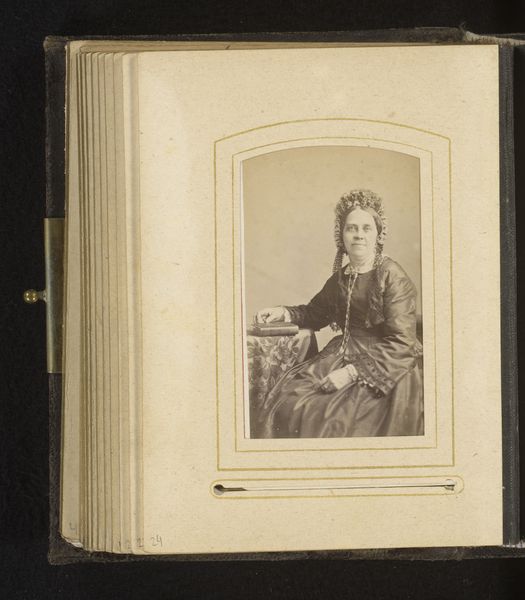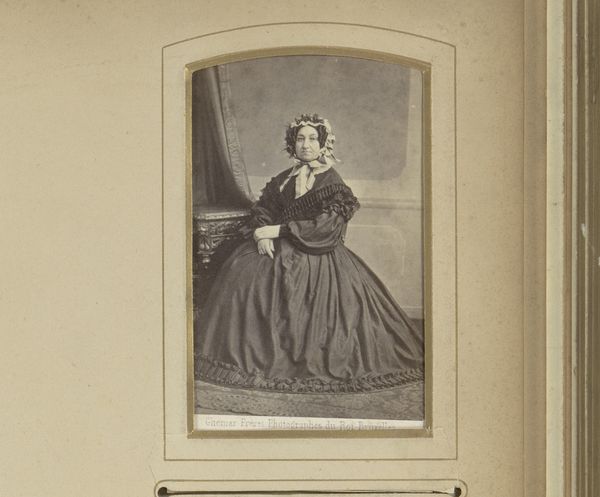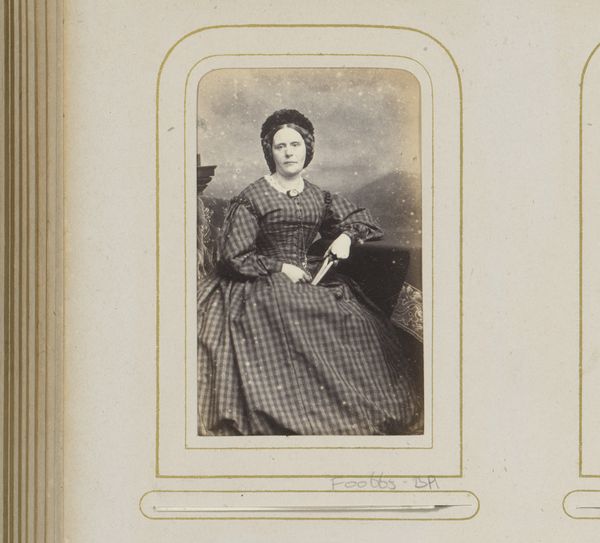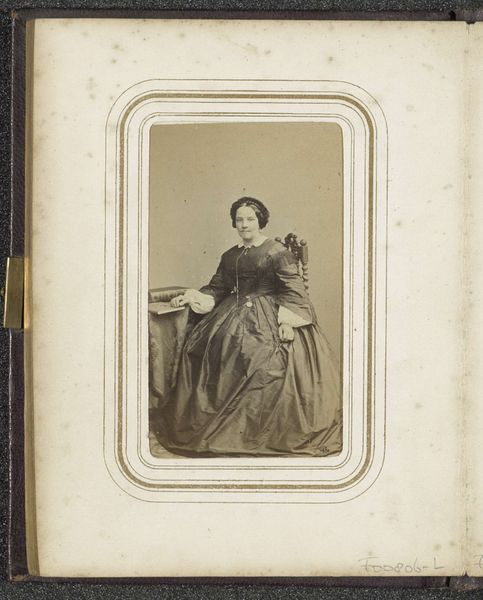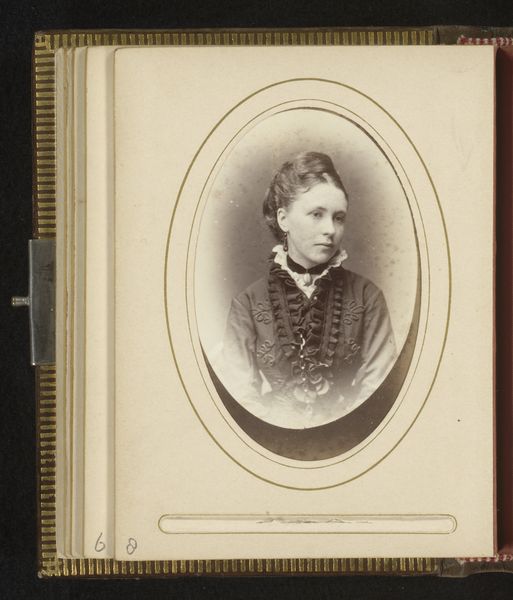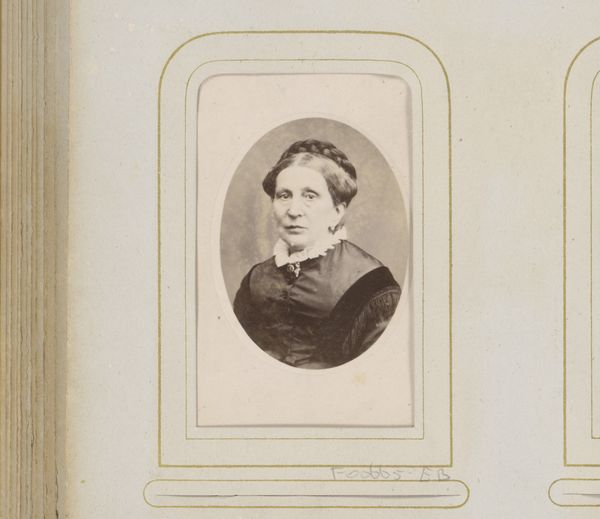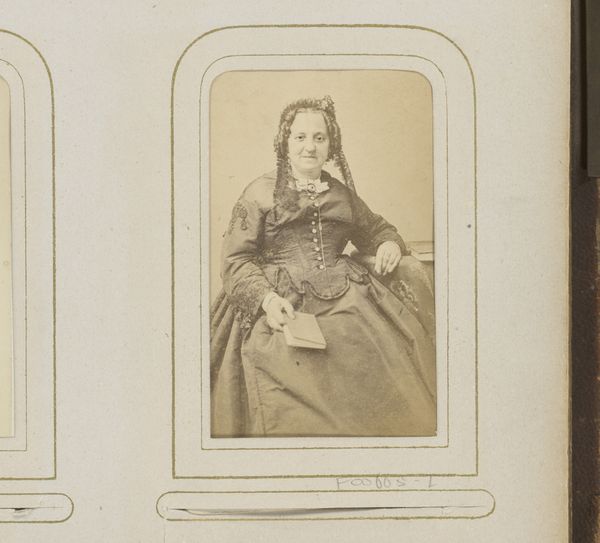
photography, collotype
#
portrait
#
photography
#
collotype
#
genre-painting
Dimensions: height 83 mm, width 52 mm
Copyright: Rijks Museum: Open Domain
Curator: The portrait of a woman reading is imbued with such quietude, isn’t it? There’s a contemplative air about it. Editor: It absolutely exudes that Victorian era reserve, that contained sensibility so often enforced, or maybe projected. The woman sits quietly, a book in hand... Tell me, when was this photograph created? Curator: This image, formally titled “Portret van een lezende vrouw, zittend op een stoel,” dates from around 1874 to 1885. We attribute it to the studio of Chaffin & Sons. What's interesting is that it's not a photograph, but a collotype - a photographic print made from a plate of gelatin. Editor: A collotype, fascinating! That accounts for the soft, almost painterly quality. This era saw such a rise in the 'woman reader' as a cultural emblem. Was she valued as a woman only insomuch as she educated herself, though? I wonder who she might have been. Curator: Precisely. And I wonder what she is reading! That the book remains unnamed, undefined is potent in itself. A potent symbol: reading stands as a token of the rise in individualism. Yet, simultaneously, it reflects women's restricted existence – trapped in a domestic role. Editor: A kind of gilded cage. I'm struck by how enclosed she feels within the photographic frame itself, it's within the gilded frame in the album page and framed again in the collotype print. Her gaze downward is particularly telling; averted from direct contact. What do you see here that perhaps alludes to that restricted condition? Curator: Absolutely. She's further framed and guarded. Note the composition is primarily about right angles; this visual metaphor conveys a strict world with rigid constraints. We might even extend that idea to her cap, which, I’d suggest, conveys submissiveness. This is reinforced by the way her gaze falls inward – suggestive of deep reflection, yes, but also potentially of melancholy. It makes you ponder the psychology behind these sorts of portraits – were they consciously cultivating a specific persona? Or just conforming to societal norms of visual representations of women? Editor: It seems portraits of this era operated both as expressions and performances; acts of identity creation that were consciously made, shaped to mirror – and inevitably internalize – prevailing expectations. The woman in the portrait might herself been enacting both an expression and performance in the image. I do agree the soft collotype adds such nuance to our perceptions of her mood, she truly lives within its rich depth. Curator: I find collotypes transportive in that sense. It’s more than just seeing a historical image, you are presented a sense of being immersed in that past. Editor: Precisely. Thank you!
Comments
No comments
Be the first to comment and join the conversation on the ultimate creative platform.

